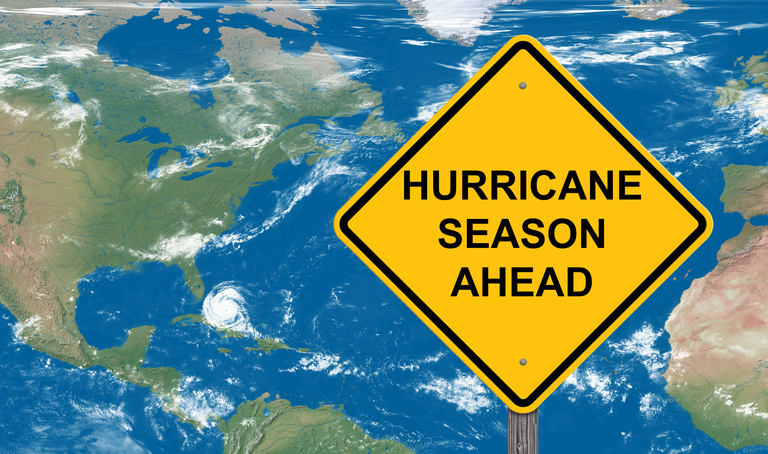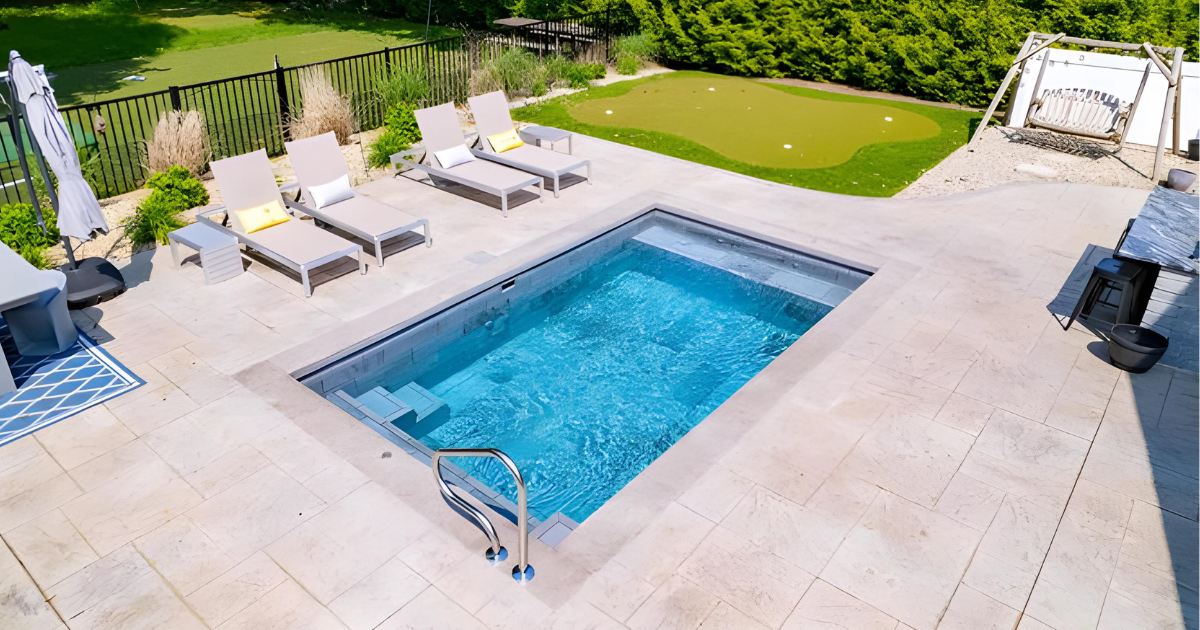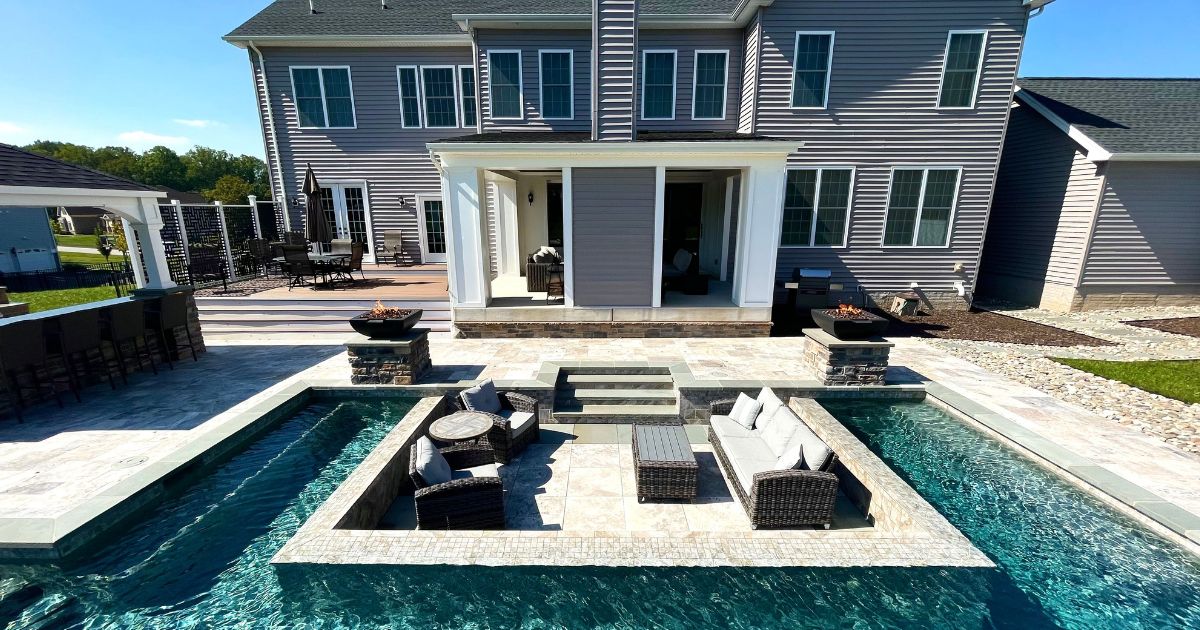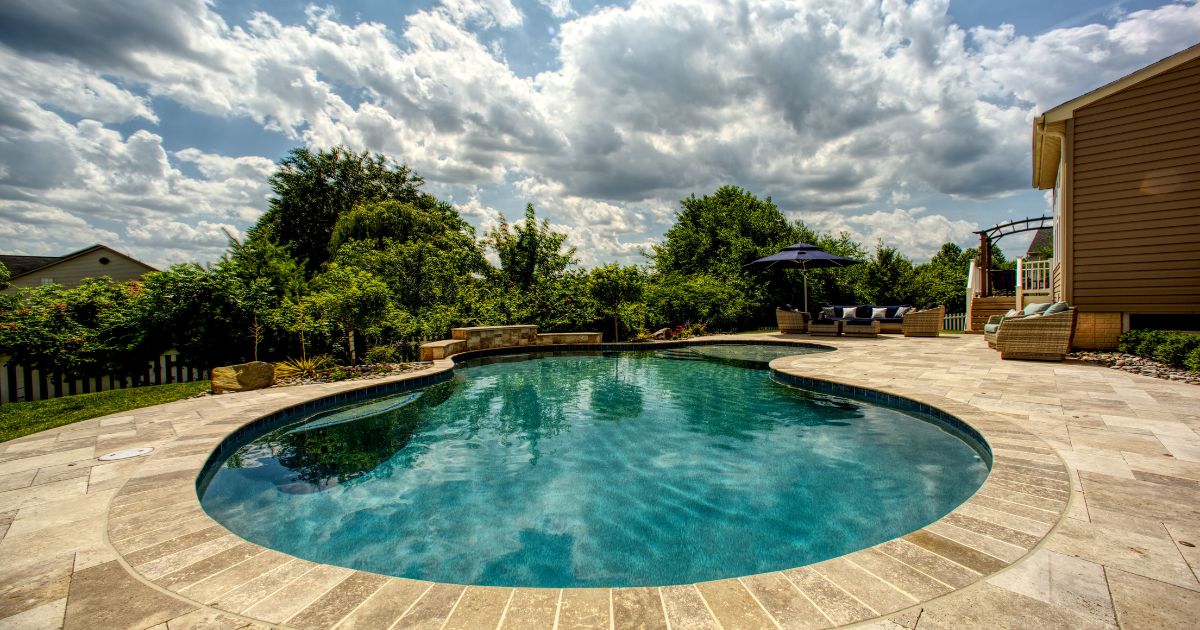Wondering how you can get the benefits of living waterside in a small backyard? Then…

How to Prepare Your Pool for Hurricane Season
Hurricane Season in the Mid-Atlantic runs from June 1st through November 30th. Typically, the months of August and September tend to be when the largest tropical storms roll through. If you’ve experienced a tropical storm in the Mid-Atlantic region, you know the amount of rain they are capable of bringing in, as well as the damage they can cause. To help you prepare for hurricane season, we’re covering four cautionary steps you can take to protect your inground pool.
Do Not Cover The Pool
Covering the pool might be the first thought that comes to mind. However, by placing a cover over your pool, you may be doing more harm than good. Typically with a strong summer storm or hurricane, flying debris, branches, and other miscellaneous yard items can potentially end up in your pool. By placing a cover over your inground pool before the storm, you’re allowing these items the chance to damage your cover.
Keep in mind that it will be easier to remove debris from your pool rather than replace a cover. Pool covers can be costly (especially if you have a custom shape pool like most newer ones.) Save yourself the hassle of purchasing a new cover and keep it tucked away until it’s time to officially close the pool for the season.
Protect Any Outdoor Electrical Equipment
While your pool’s outdoor electrical equipment should already be protected, it’s a good idea to reassess before the storm rolls in. Make sure any electrical equipment is fully secured and will not cause your pool or outdoor space any harm during and after the storm.
Remove Any Lightweight Objects Around The Pool
Pool floats, lightweight furniture, chairs, tables, plants, and toys, should all be removed well before the storm starts. Not only can your items be picked up by heavy winds, but they can also easily be damaged, as well as cause damage to your home, outdoor space, or even other homes close by. If you’re unable to bring these items indoors, be sure to secure them so it is not possible for them to be damaged or damage something else.
Heavier furniture may be ok in the event of a hurricane. If it is heavy enough to not be moved by strong winds, it will most likely not be picked up, therefore unable to cause damage to your surroundings.
After The Storm Passes
After the storm is long gone, it’s a good idea to assess any damages. Check for damages in or around the pool, as well as damages around any hardscaping that may need to be fixed later on. It’s also important to reassess what’s going on inside the pool. Check on the pH levels, see if chlorine needs to be added, and make sure the filter and any other electrical equipment are running smoothly.
You should run the overall pool operations for at least 2 days to make sure that everything electrical is working, there is no internal damage, there are no leaks, and there are no other hazardous issues.
Make It Exceptional. Make It Woodfield.
At Woodfield Outdoors, we are dedicated to providing you with an exceptional pool experience. We strive to provide you with the utmost amount of care for your inground pool during installation and throughout your post-installation process.
We work with homeowners throughout the Baltimore area, including Anne Arundel County, Baltimore City, Baltimore County, Carroll County, Cecil County, Harford County, and Howard County. Schedule a call today.



